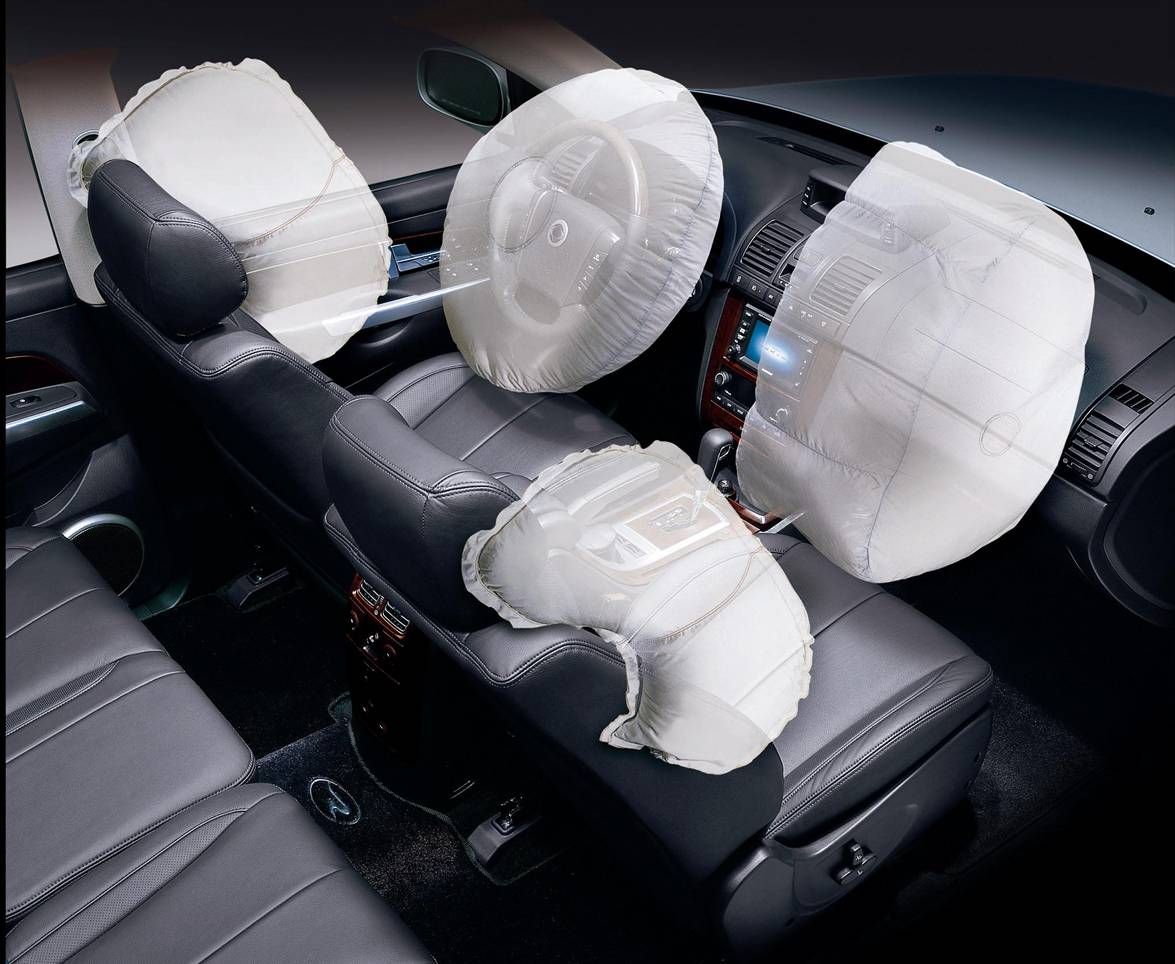The airbag is a relatively new accessory implemented in cars. Originally designed and conceived for airplanes the inflating system was adopted by automakers also. It’s role is to generate more safety for the driver and other occupants of a car in case of a collision.
How does it work?
The airbags are inflated cushions that fill up with air or light oxygen-based gas. They pop up through a designated are to soften the blow of an impact. Airbags are placed on the driving wheel, above the glove compartment, the side of the seats, above the windshield and in some cases even in the headrests of the front seats for the safety of the rear passengers. They fill up with gas almost instantly with a speed of a daggering 0.2 seconds. As quick as they get filled with air, they also deflate in 0.3-1.1 seconds (depending on the car).
Air bags supplement the safety belt by reducing the chance that the occupant's head and upper body will strike some part of the vehicle's interior. An exact number of lives that have been saved by the airbags is almost impossible to calculate. Probably it would be a six-figure number
Airbag injuries and fatalities
Airbags involve the extremely rapid, violent deployment of a large object. While airbags can protect a person under the right circumstances, they can also injure or kill.
To protect occupants not wearing seat belts, US airbag designs triggered much more quickly than airbags designed in other countries. As seat belt use in the US climbed in the late 1980s and early 1990s, US auto manufactures were able to adjust their designs.
Newer airbags trigger slightly less violently; nonetheless, passengers must remain at least 25 centimetres (10 in) from the bag to avoid injury from the bag in a crash.
Injuries such as abrasion of the skin, hearing damage (from the sound during deployment), head injuries, and breaking the nose, fingers, hands or arms can occur as the airbag deploys.
In 1990, the first automotive fatality attributed to an airbag was reported, with deaths peaking in 1997 at 53 in the United States. TRW produced the first gas-inflated airbag in 1994, with sensors and low-inflation-force bags becoming common soon afterwards. Dual-depth airbags appeared on passenger cars in 2005. By that time, deaths related to airbags had declined, with no adults deaths and 2 child deaths attributed to airbags that year. Injuries remain fairly common in accidents with an airbag deployment.
Smoking a pipe while driving should be avoided. If the airbag inflates and hits the pipe while it is in the mouth this may well be deadly, even if the impact is only moderate.
The increasing use of airbags has actually made rescue work for Firefighters, EMS and Police Officers more dangerous. Airbags can detonate long after the initial crash, injuring or even killing rescue workers who are inside the car. The addition of side impact airbags to the frame of the car has reduced the number of places that rescue workers can use hydraulic spreader-cutters ("the jaws of life") or other similar cutting tools to remove the car roof, or doors safely. Every first responder should be properly trained on how to safely deactivate airbags or be aware of the potential hazards. Removing the car battery may be a good precaution.
Airbag Landing System
The Mars Pathfinder- an offroader designed by NASA for out-of-space missions has its landing system based on airbags.

